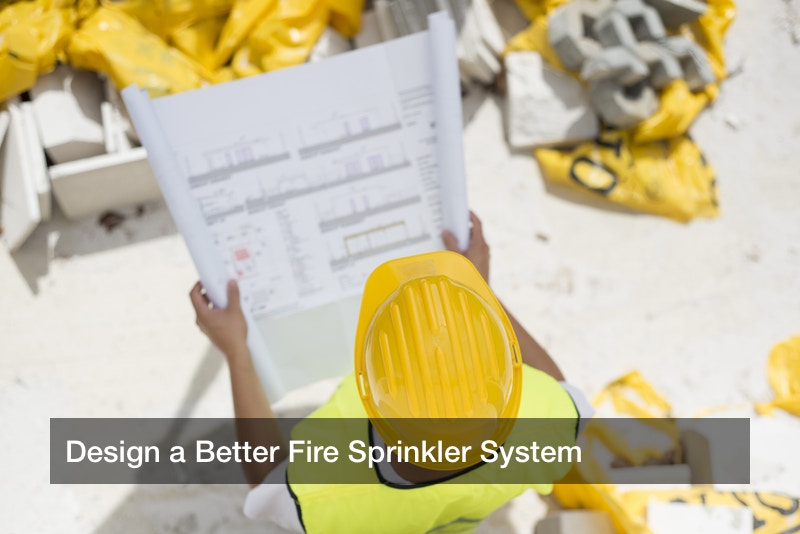

A number of hazards may threaten a public building, from schools to office buildings to banks to shopping malls. Floods can break down walls and sweep away people and items alike, or an earthquake may bring the entire building down and rupture gas lines. Storms such as tornadoes or hurricanes may strike. But even if a building is far away from flood zones, fault lines, or storm-prone regions, fire is always a possibility. Fires are among the most dangerous and destructive incidents that can happen in a building, and famously large and destructive fires have been documented before. In centuries past, both London and Chicago suffered massive fires, and even today, with more modern construction and fire protection to prevent flames, they can still happen. Careless behavior in a building or faulty utilities can cause a fire. To prevent all this, a fire sprinkler designer may offer fire sprinkler system layout examples to a client company, and automatic fire sprinkler design can be quite advanced today. Fire sprinkler online training may also be available.
Fire Sprinkler Basics
Ever since 1874, American building managers have utilized fire sprinkler companies to install and maintain fire sprinkler systems, and these sprinklers may reduce the amount of water needed to quench a fire by as much as 90% or so. Most Americans have probably seen fire sprinkler hardware in a building such as a school or department store before, and some may have even seen them in action. Fire sprinklers are automatic and connected to sensors that can alert the system to a fire. A building may have many sprinkler heads in many different rooms and hallways, but often, during a fire, only the sprinklers in the affected area may activate. This may help reduce water waste, and also reduces water damage to the rest of the building. Putting out a fire is certainly worth the side effects, many would argue, but it’s efficient to have fire sprinkler system layout examples that don’t douse the entire building for a small fire in just one room. Today’s fire sprinkler system layout examples have not only fire suppression, but also efficiency in mind. This can save everyone a lot of hassle.
Planning and Installation
If a building manager realizes that his or her building has an outdated fire sprinkler system, then that manager may contact a local fire sprinkler company to review design ideas for a new setup. Designers from a fire sprinkler system may offer fire sprinkler system layout examples, and the building manager may coordinate with those designers to find the right solution. Fire sprinkler system layout examples may also be reviewed if an entrepreneur purchases a very old building whose fire sprinkler system is outdated, nonfunctional, or absent entirely. Modern fire safety codes and laws call for vigorous anti-flame methods, and a business owner probably won’t get far without having proper fire suppression systems firmly in place.
Once fire sprinkler system layout examples have been reviewed, and one is chosen, professionals will visit the premises and install all of this hardware. Such hardware may range from the sprinkler heads to the pipes that carry their water to the sensors that set them off. What is more, fire code officials from the city or town government may visit and review all of the hardware and make sure that all employees have undergone fire drills. During a fire, even if there are modern sprinklers in place, employees are urged to evacuate the building no matter what. This means having fire exits unblocked and clearly labeled, and everyone should know where they are. In fact, it is nearly always against local fire codes to have these doors obstructed. Employees are also urged to know where to find fire extinguishers and learn how to use them.
Fires may be set from a number of factors. Although people typically don’t use lit tobacco in buildings anymore, an electrical fire may start when a frayed cord’s exposed wire touches paper, drapes, or carpets and set them ablaze. Fire may also light up if an earthquake damages the gas lines in a building. It is common for fires to start during an earthquake for this very reason. Or, the fire may start from vandalism, an intentional fire.